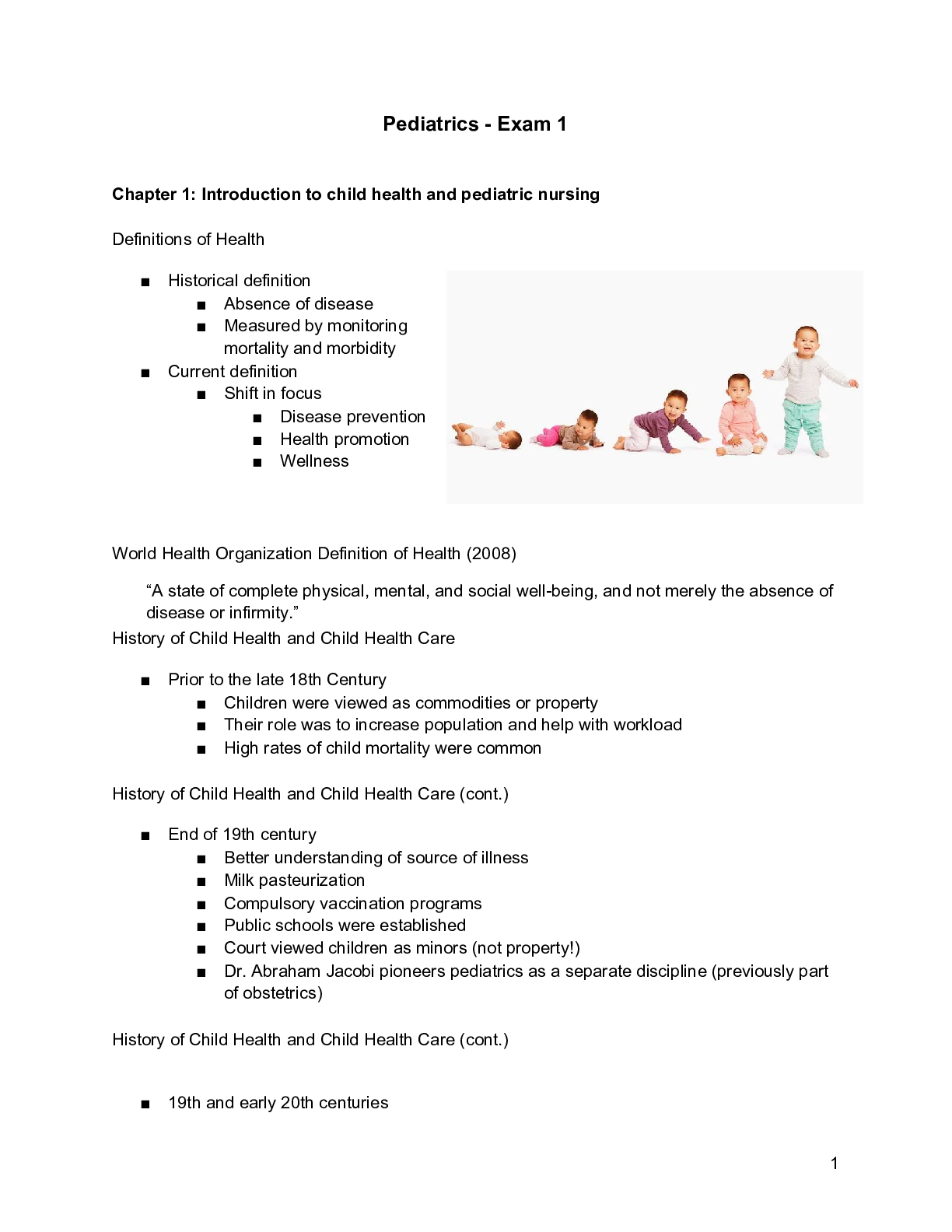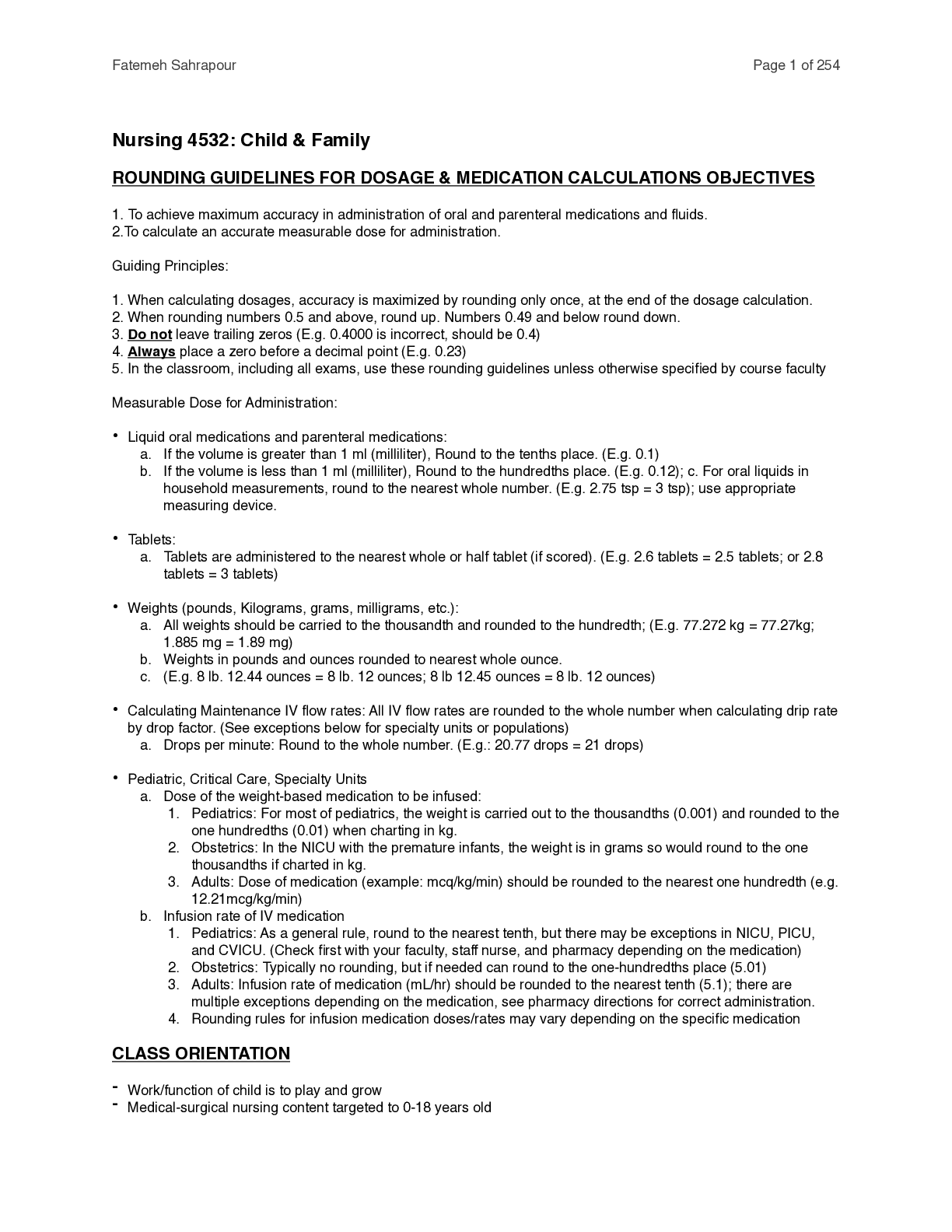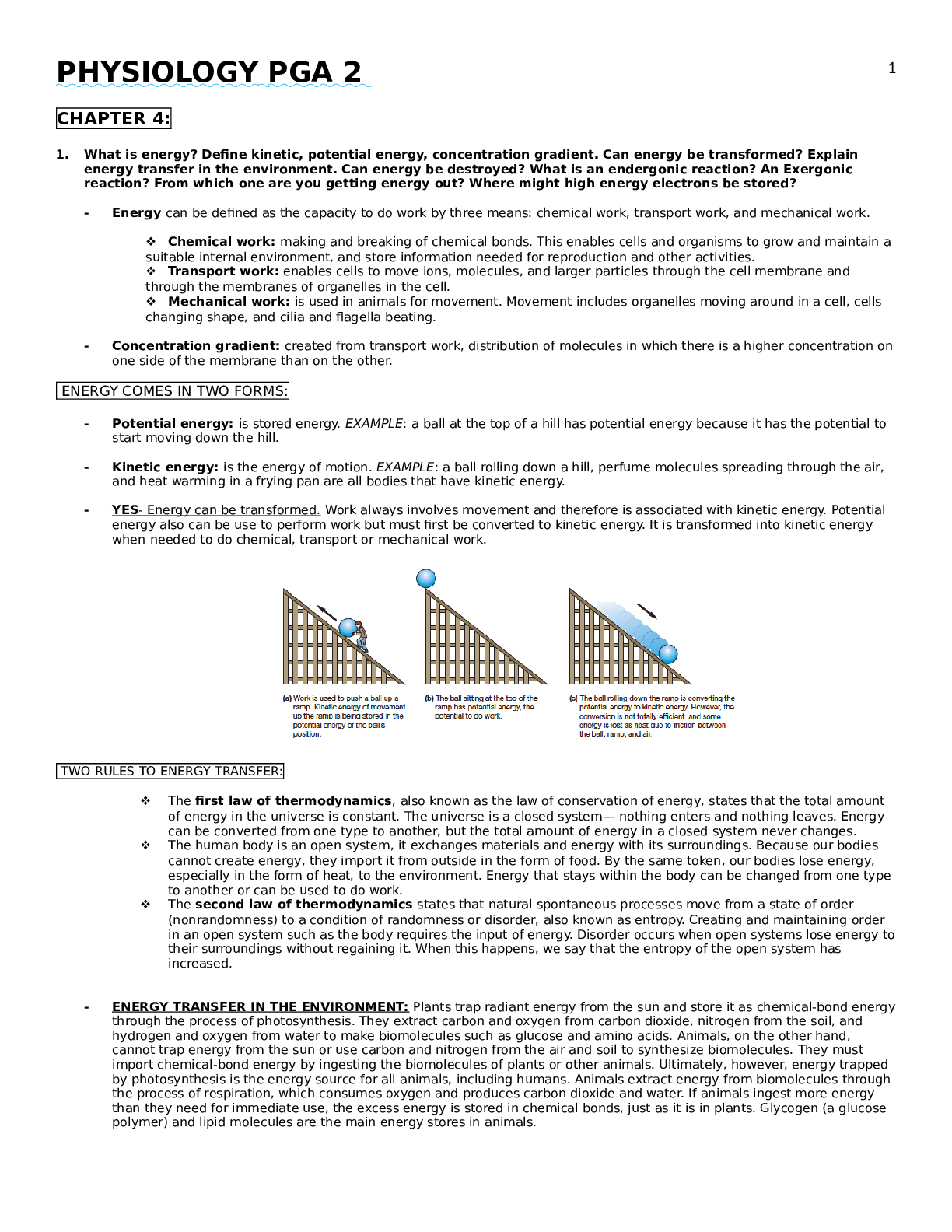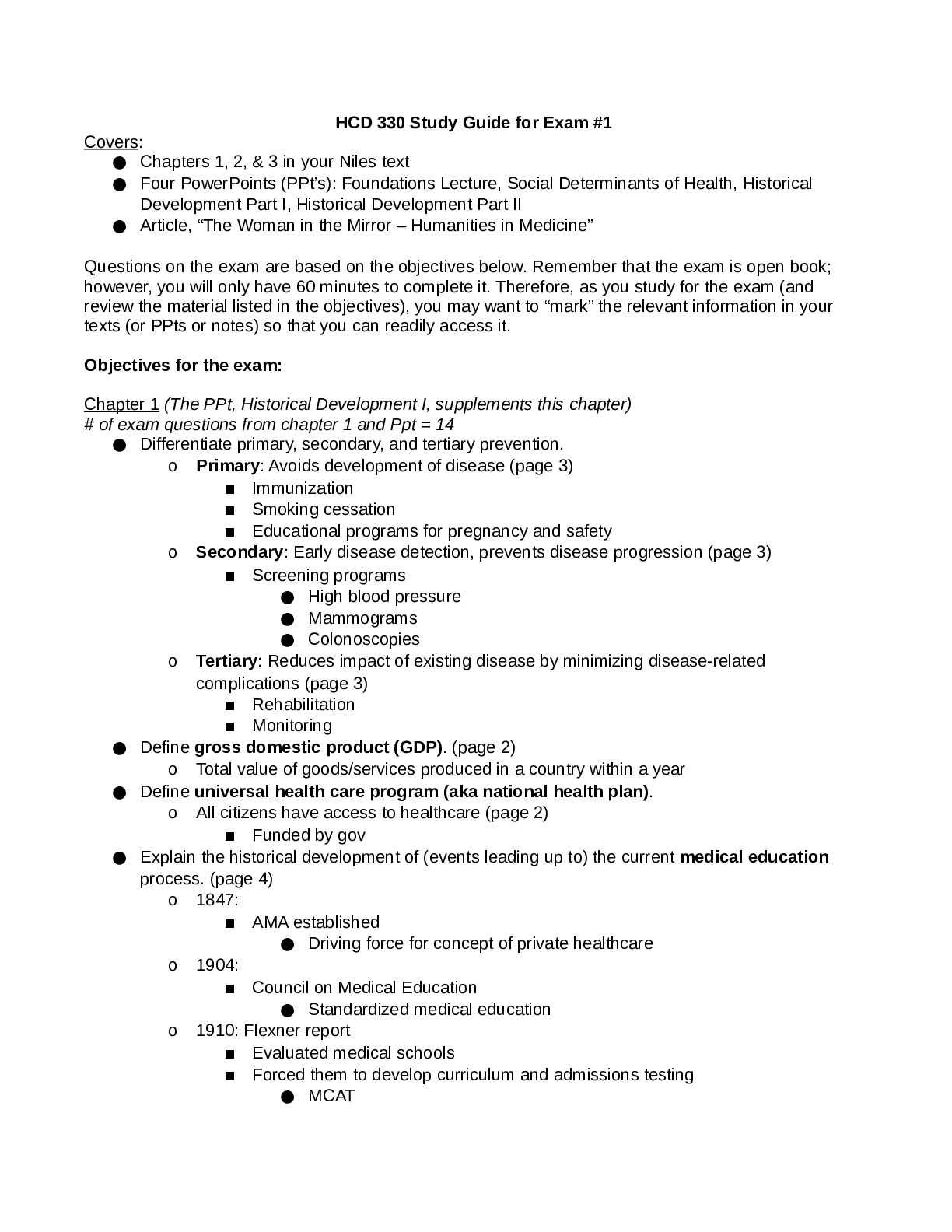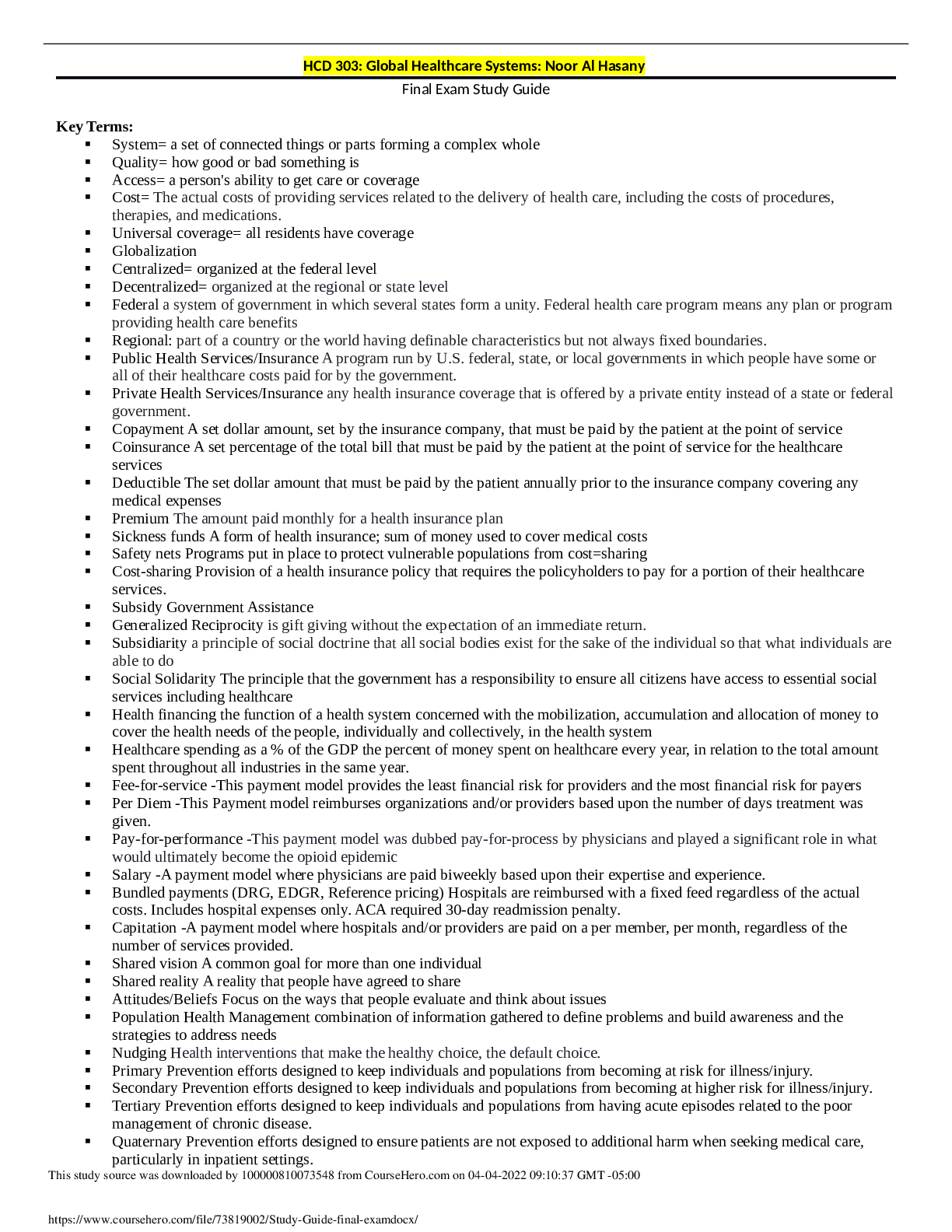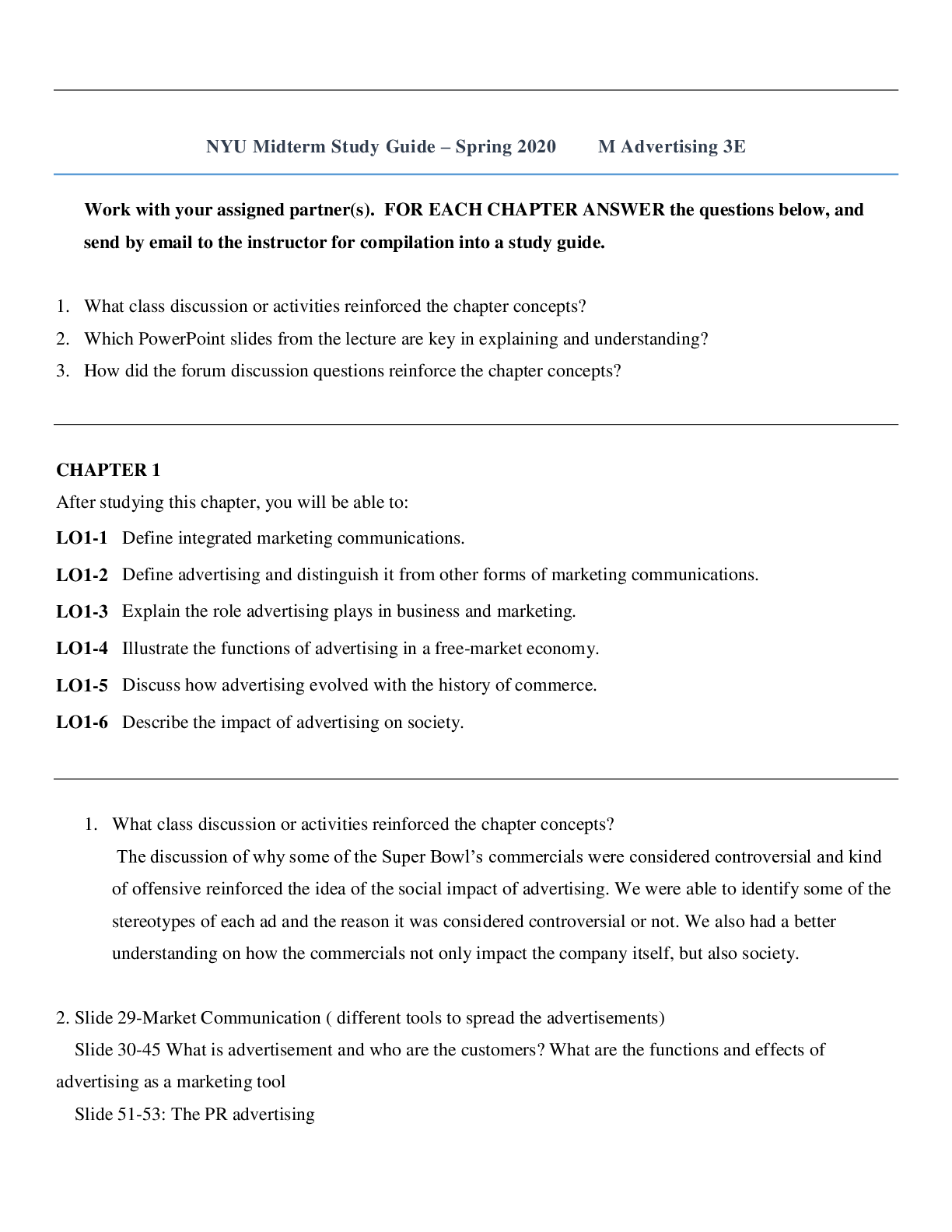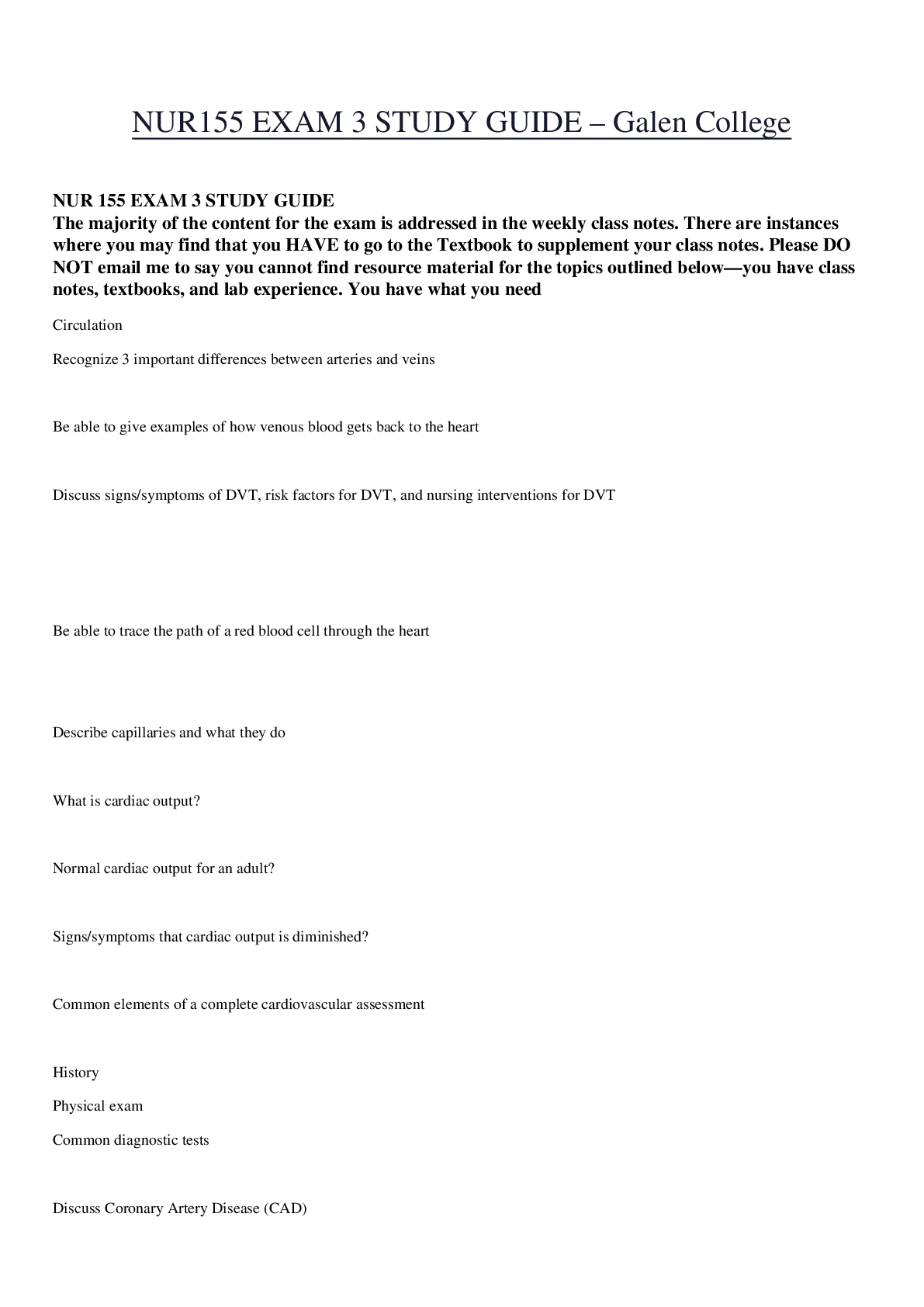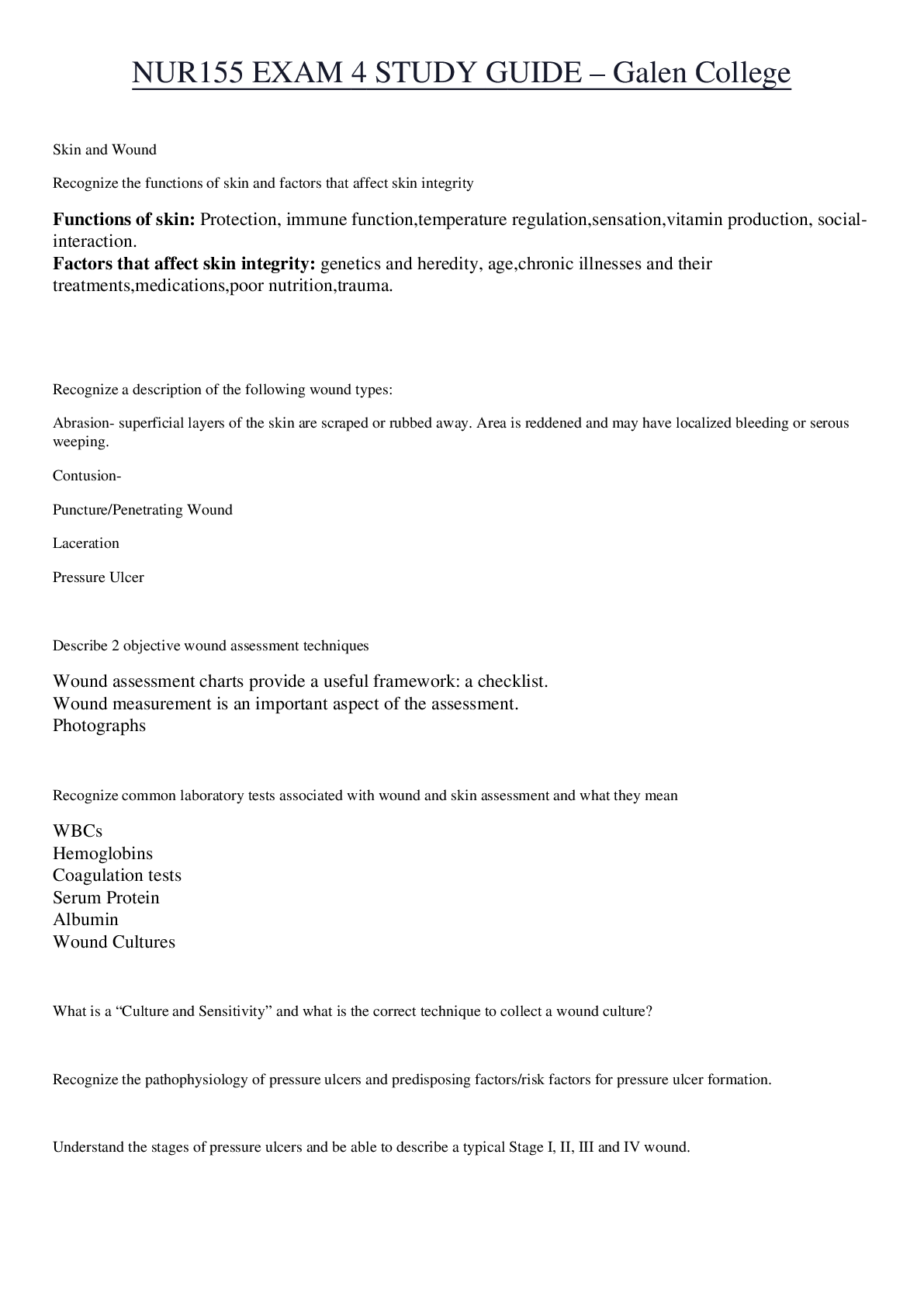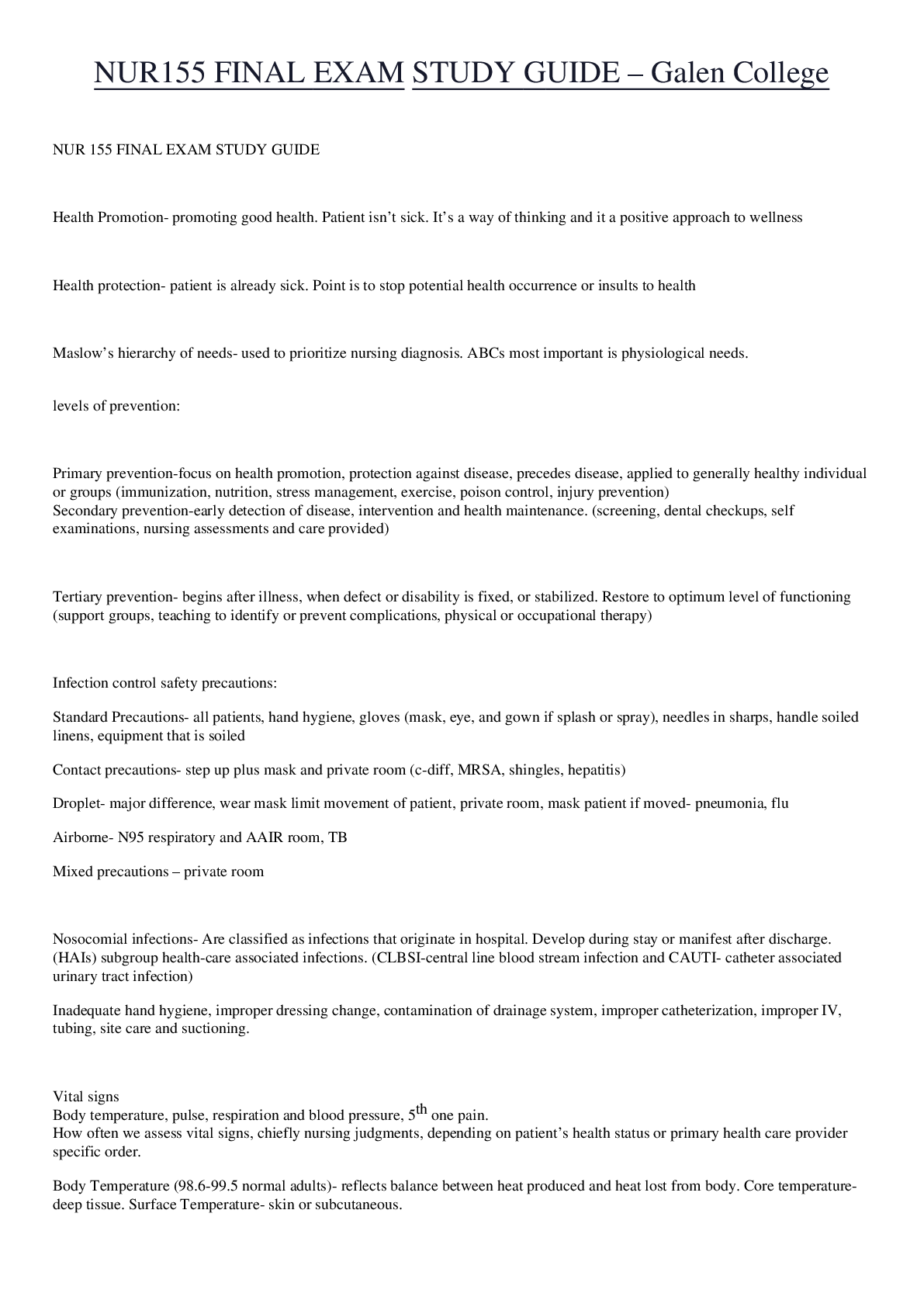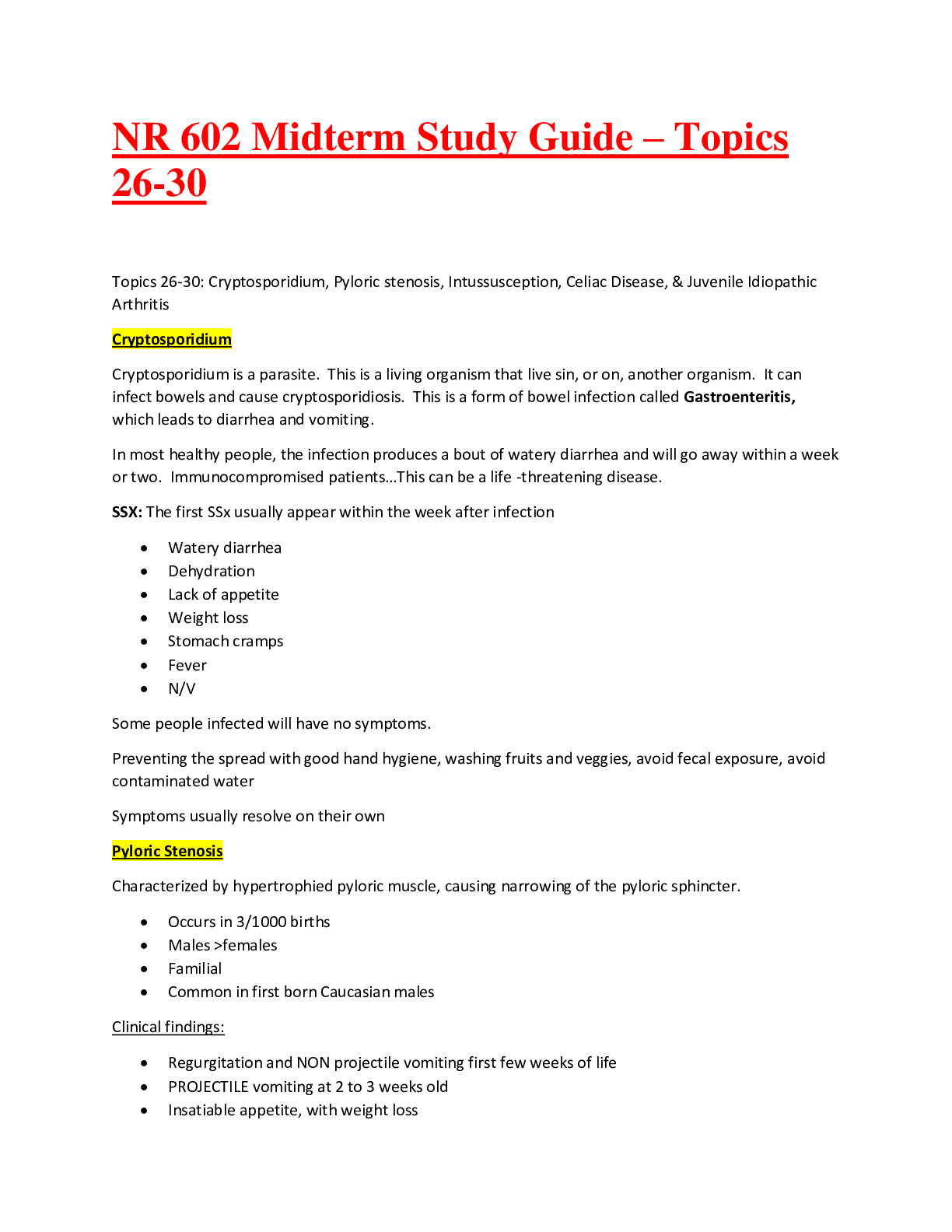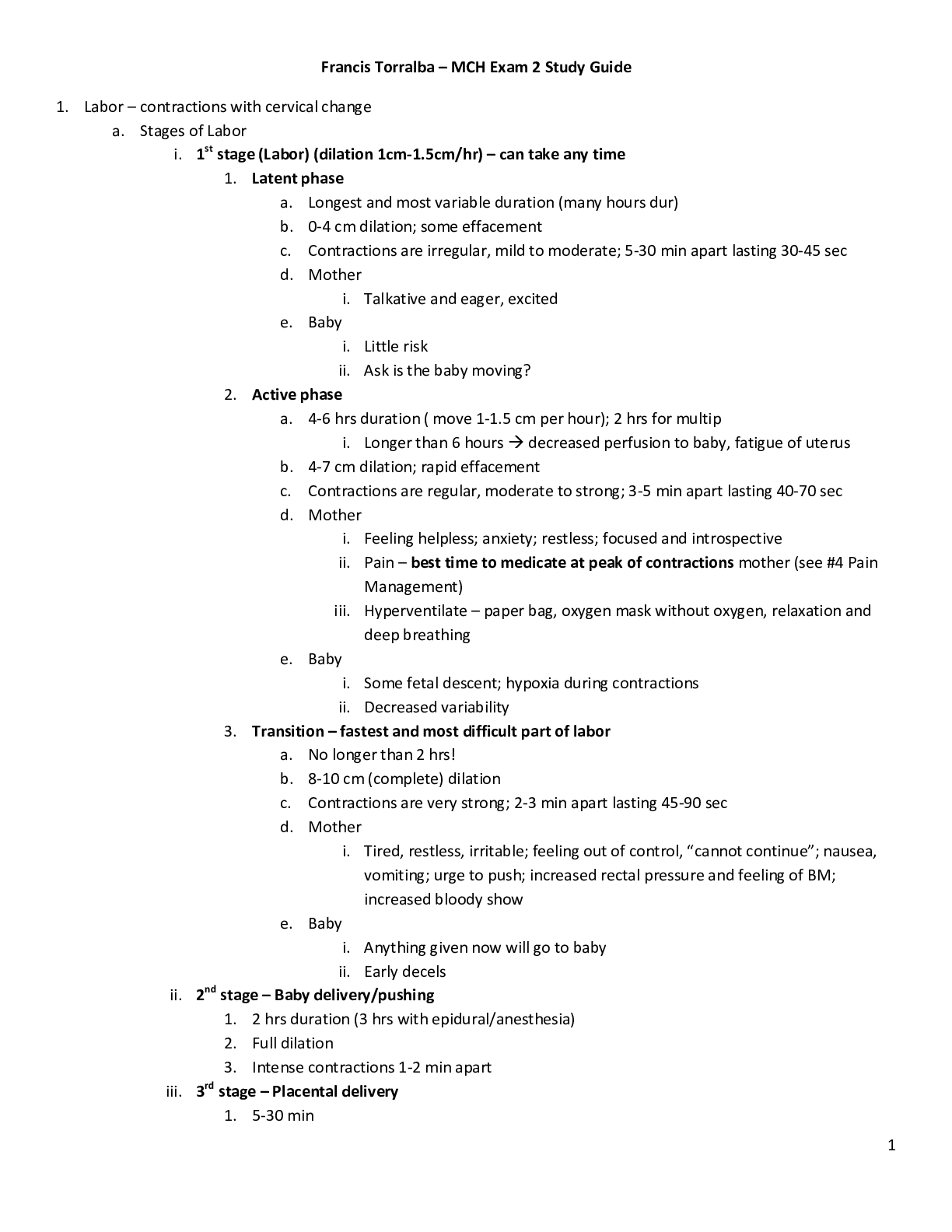*NURSING > STUDY GUIDE > NUR 2633 Maternal Child Health Study Guide – Test 3 (Final Exam) Questions /Answers (All)
NUR 2633 Maternal Child Health Study Guide – Test 3 (Final Exam) Questions /Answers
Document Content and Description Below
NUR 2633 Maternal Child Health Study Guide – Test 3 (Final Exam) Questions /Answers 1. Hospitalization causes many issues – Stress is the Big one. This can be positive and negative, please exp... lain. What is the child most afraid of – 3 things? How can we minimize the stress of hospitalization? Loss of independence, Fearful of pain and fearful of bodily harm. Have care giver with them; Explain the procedure in terms they will understand; Talk slowly; Choose words wisely; Let them explain the procedure back to you; Have them bring a (transitional object) toy/blanket with them. Comfort them. Include them in their care. Always provide privacy regardless of age- explain everything to all- engage with the patient. Stress causes children to rely on their own abilities to deal with their stress/fears. We must help them to be successful. 2. How do we communicate with children- usually techniques, then add with a child that has a hearing deficit, visual deficit, and cognitive issues? Always speak to the child at the level they understand. Face them when you speak. Use pictures, boards, interpreters, sign language to communicate. Your verbal needs to match your non-verbal. Have them draw a picture instead of asking about the parents. If they have a visual deficit make noise, eye contact, smile… 3. What will ease their stress – remember each stage has a different fear as well as the 3 basic fears (example – Infants from 6 mos. through toddler hood – fear of separation) Keep the parents with them if possible. Be sure to empower the parents- they know their child’s behavior best. Try to continue somewhat of the schedule they maintain at home: feeding, bathing… If parents need to be away-associate time with an event. Example: Your mom will be back after you eat. Having the parent present relieves respiratory distress, changes the perception of pain, makes them more cooperative and more interactive. Parents are the expert on the children. Ask parents if the behavior is correct for the situation? Or is it outside of the norm? 4. Play is a huge component of children’s communication and work. Note the types of play, which play form is most relative to each stage of childhood, and how can you incorporate that into your communication and education of the hospitalized child? (GO back to CHAPTER 4) Solitary- Infant plays alone- Stimulates themselves with simple imitative games. Parallel and Onlooker- Toddlers play alongside each other or watching each other- They transition from playing by themselves to playing with others. Associative- Preschooler play together in a loosely organized manner- They learn how to share and play in groups. Parallel can be toddlers or preschoolers. [Show More]
Last updated: 2 years ago
Preview 1 out of 6 pages

Buy this document to get the full access instantly
Instant Download Access after purchase
Buy NowInstant download
We Accept:

Reviews( 0 )
$12.00
Can't find what you want? Try our AI powered Search
Document information
Connected school, study & course
About the document
Uploaded On
Mar 15, 2021
Number of pages
6
Written in
Additional information
This document has been written for:
Uploaded
Mar 15, 2021
Downloads
0
Views
104



